The Ford Mustang Mach-E is a car built for many different angles, both aesthetically and on the consumer side. It’s a brilliant car to drive, and among EVs, it has quickly become one of my favourites, but prospective EV buyers might not like the ‘muscle’ side of it, and muscle fans might not like the ‘EV’ parts.
The most lukewarm reception of the car notes that it’s not really a Mustang, it’s more a four-door electric SUV. Beyond stylistic nods, the badge, and the name itself, perhaps it’s best described as Mustang-adjacent. The four-door, SUV, and ‘Mustang’ points of difference have been smooshed together for this car for broad market appeal.
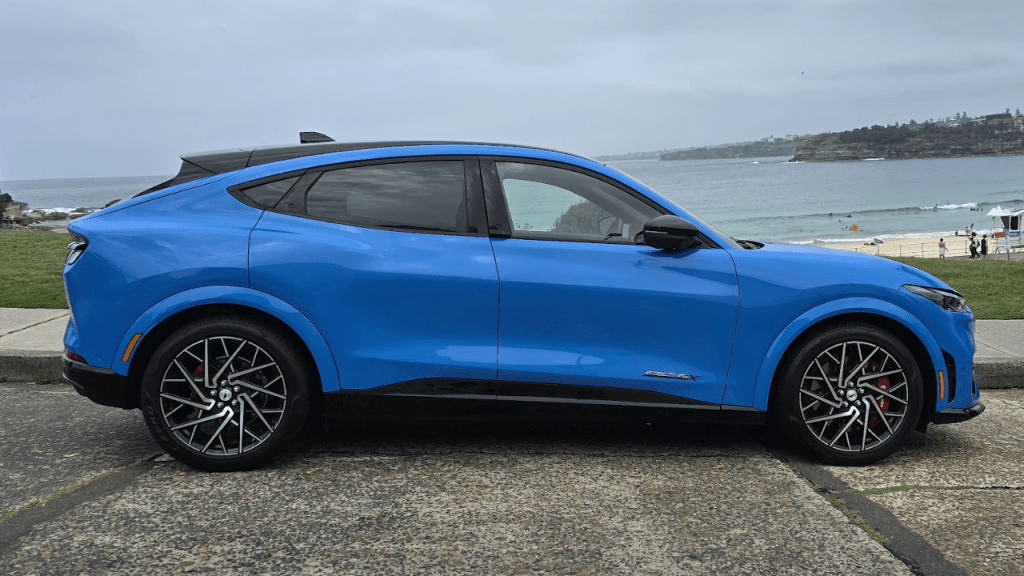
Leveraging the Mustang name, Ford can say in a single breath that this thing is powerful, while its price point and chassis can do the rest of the talking for families and people after family-sized cars. It’s the best example of an ‘everything’ car I’ve ever seen.
I’m happy to report that this car certainly ticks those boxes. It’s the fastest Ford to ever be sold in Australia, and it’s comfortable to sit in the front and the back seats.
Pony powerhouse
The Ford Mustang Mach-E is mighty. It feels exceptionally powerful on the road, particularly when you’ve got it set to the ‘Untame’ maximum power mode, which generates an artificial engine noise through the internal engine speakers. This is aided by the car’s aesthetics obviously. Internally, you do feel like you’re in a futuristic muscle car, though the 15.5-inch infotainment screen in the middle might pull you out of the fantasy somewhat. It doesn’t feel as heavy as it is to drive, it’s fast and responsive, and it’s got an adequate turning circle.
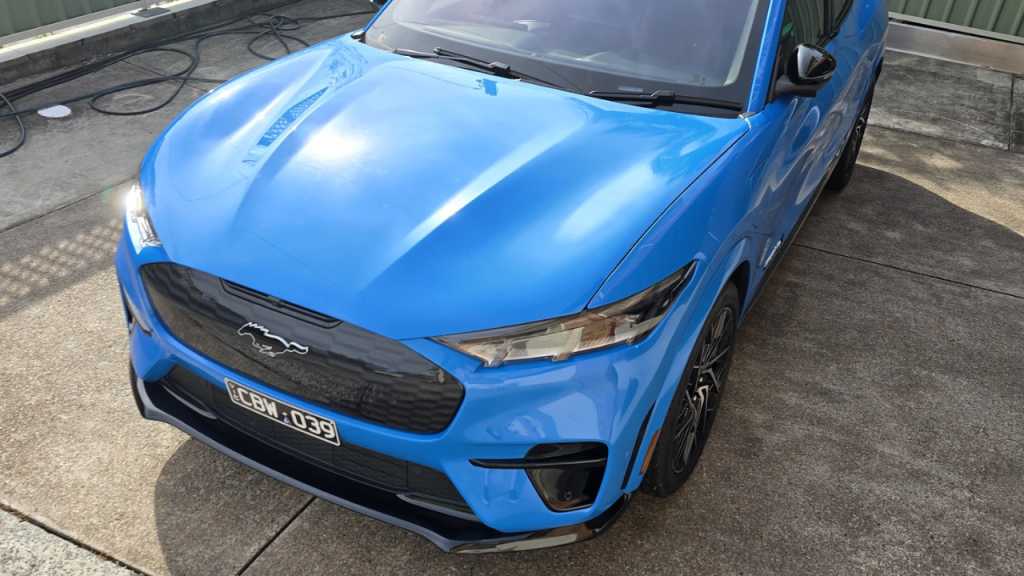
The 0-100km/h speed of the Mach-E is about 3.7 seconds (the same as a Tesla Model Y Performance), though that’s for the AWD ‘GT’ model. For the base ‘Select’ and mid-range ‘Premium’, you’re looking at 6.6 and 6.2 respectively.
Meanwhile, battery range may leave some prospective EV converts underwhelmed. The base trim is capable of about 470km on the WLTP cycle, whereas the mid-range model, which packs a RWD drivetrain in with a near-100kWh battery, is capable of about 600km. The ‘GT’ model, with two motors and an AWD drivetrain, can travel 490km.
Compared to the closest rivals of these cars, the Hyundai Ioniq 5 and the Tesla Model Y, battery range is roughly the same, if a little below, I would highly recommend you take each of these cars for a test drive before committing to a purchase. After all, you may like the Model Y’s simplicity, or the Ioniq 5’s fun and sensible nature, over the Mach-E’s desire to be an electric muscle car. The car also charges at a maximum of 150kW DC on a public charger, which may underwhelm you, especially when the earlier-mentioned rivals offer charging speeds well above 200kW.
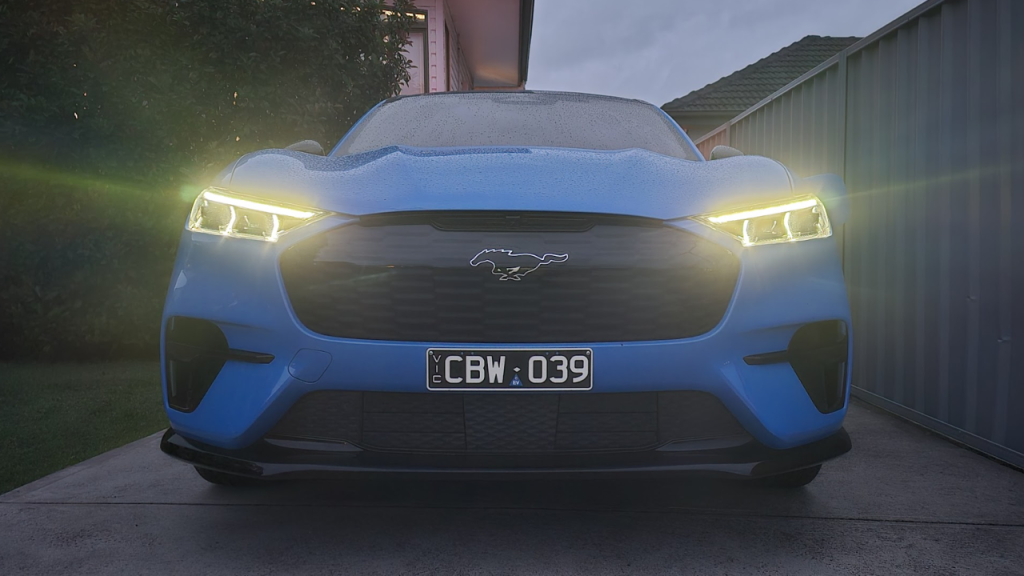
The sense of strength the Mach-E projects with its exterior aesthetics is considerable. Ford’s signature muscle claw brake lights are on the back, and the front end looks very Mustang, though perhaps a bit too raised. If you were to look at just the front, or solely from the back, you might mistake this for a sedan, similar to a Polestar 2, but then you notice the car’s rear-most pillars – and it dawns on you that this, in fact, a big car.

Family fun
Posing as a Mustang, Ford’s first consumer electric vehicle is a four-door SUV for market appeal. You might have noticed that almost all of the electric cars available in Australia are SUVs, be them small, mid-size, or large, and there’s a good reason for that; people love them. Whether or not that’s a bad thing is the topic of another article, but for our review here, it’s so that Ford can attract the same big car lovers as everyone else in the EV space. Naturally, too, with the size of EV batteries, the new technology leans itself better into SUV and crossover territory than cars. The Mustang name is there to push the needle on a sale.
Driving his car around with three occupants and a boot filled with several bags, I think it would satisfy most people, most of the time. As a car, it’s fine and comfortable. Boot capacity is about 402 L, or 1,420 L with the rear seats folded down, and the car has a towing capacity of between 1,000kg to 1,500kg on the bigger battery models (750kg on the base model).

Internally, all of the seats are comfortable, and although there isn’t a massive amount of adjustment to be had with the front seats, you can certainly get into a comfortable pose. The model we reviewed, the GT, also comes with these special bucket seats that look and feel terrific.
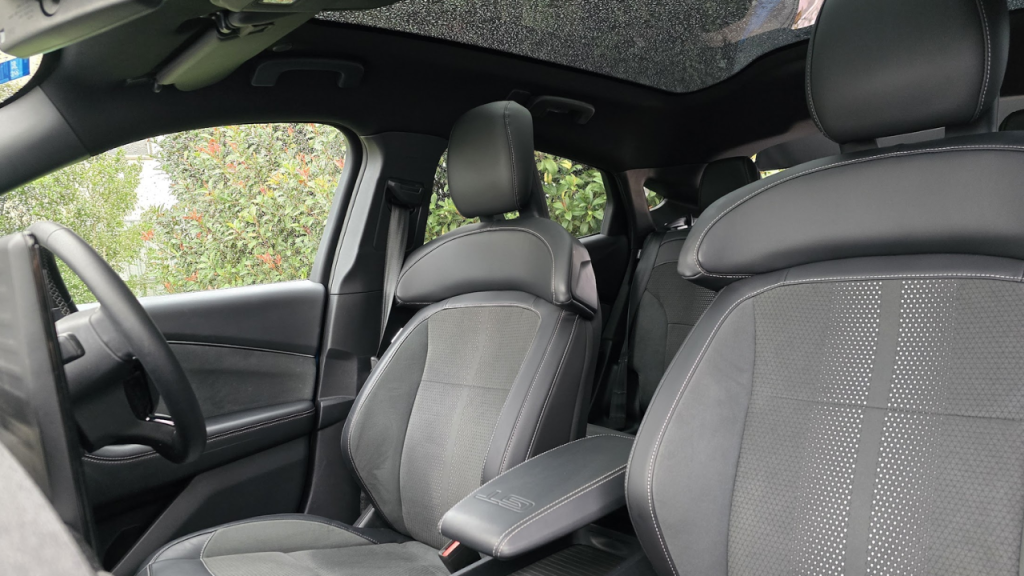
The wireless phone charger has the classic mistakes; it slips out easily and charging can cease readily, but this is something I’ve just come to expect with cars now. The centre console was strange, with the lid doubling as the armrest, but I got used to it quickly. There’s also an exposed storage section in the middle beside your legs.
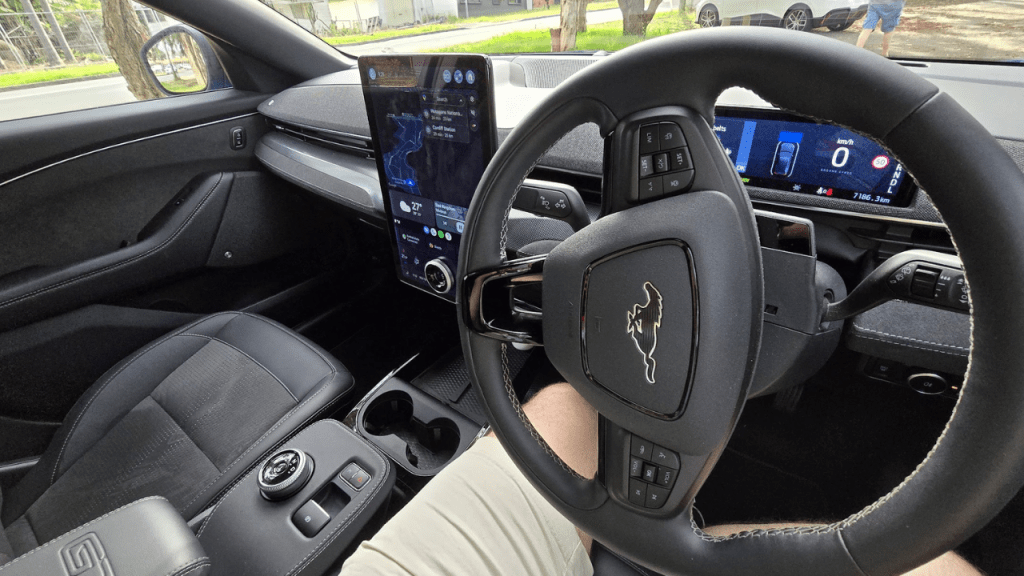
The door handles are weird and for me, it elicited a “what the?”. To open the car, you press a button on your door. The door will then pop out, and you can then open it. The front doors have grabbing handles for pulling the door open, but they don’t unlock the vehicle. The back doors have no grabbing handle, but pop out a bit further, so you can grab the back of the door.
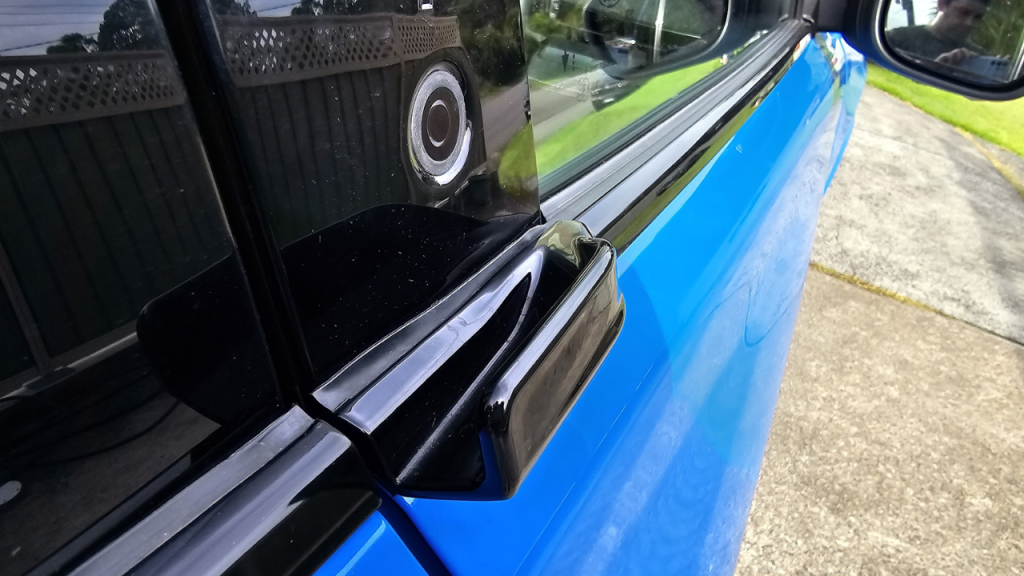
It’s just strange. I’m not sure what’s going on here. Maybe it cuts down on design complexity and repairs? I’m not so sure about that. I feel like we already mastered door handles (though to be fair, EV makers love insisting that we haven’t mastered door handles).
The car also has a foot sensor for the back – so you can just stick your foot under it, and the lid opens automatically (in case you’ve got boxes in your hands). It’s cool, I’m sure someone’s using it, but I’m not. (Editors note: It didn’t work for me at all, despite erratically swinging my foot underneath the boot for what seemed like eons).
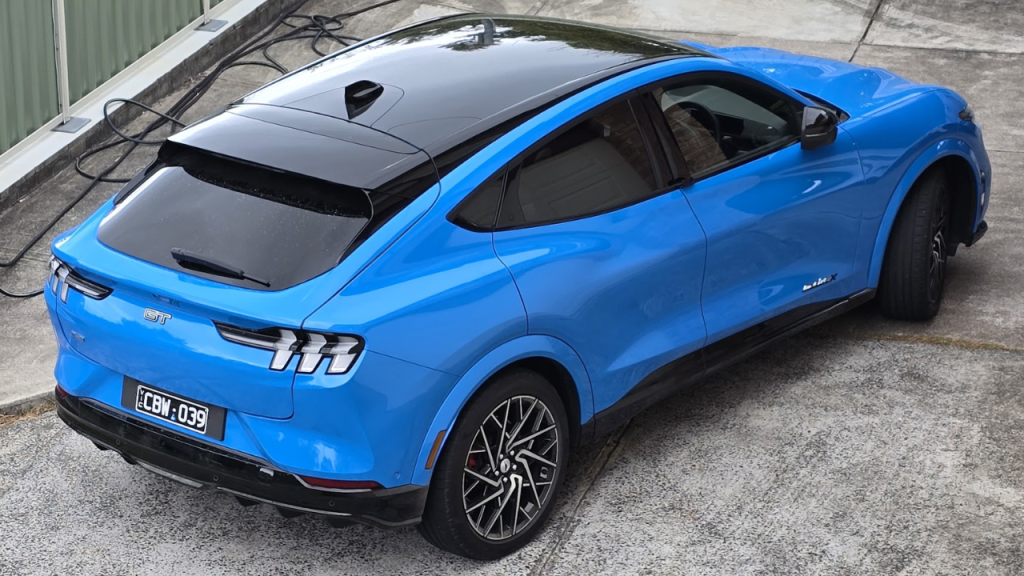
Saddlebags
Using this car, I enjoyed its operating system. Compared to rivals from BYD, Hyundai, Kia, Audi, and BMW, I would rank it highly among the operating systems from Tesla and Polestar.
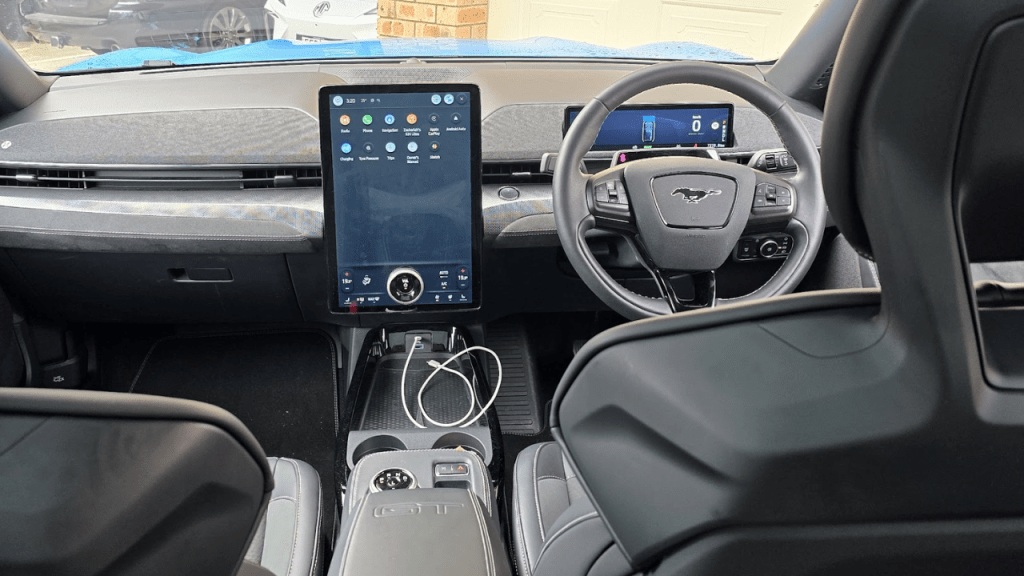
I also liked the infotainment system, and how fluidly it worked with either Apple CarPlay or Android Auto. It felt far more responsive than other EVs, with a portrait skin you don’t see particularly often, and a base OS that didn’t get in the way too often. The physical knob at the bottom of the screen is a bit strange, but you can easily get used to it. It’s used for both volume control and fan control and can turn your fans down after pressing a nearby touch button. However, this times out quickly, and I found it a little annoying.
While I do love that this car included a 360 camera, I can’t help but feel the way it’s presented puts the large screen to waste. The view only takes up a small portion of the display when in use, and it goes away once you surpass 6km/h. I would prefer it to cut out at about 10km/h, just to be safe.
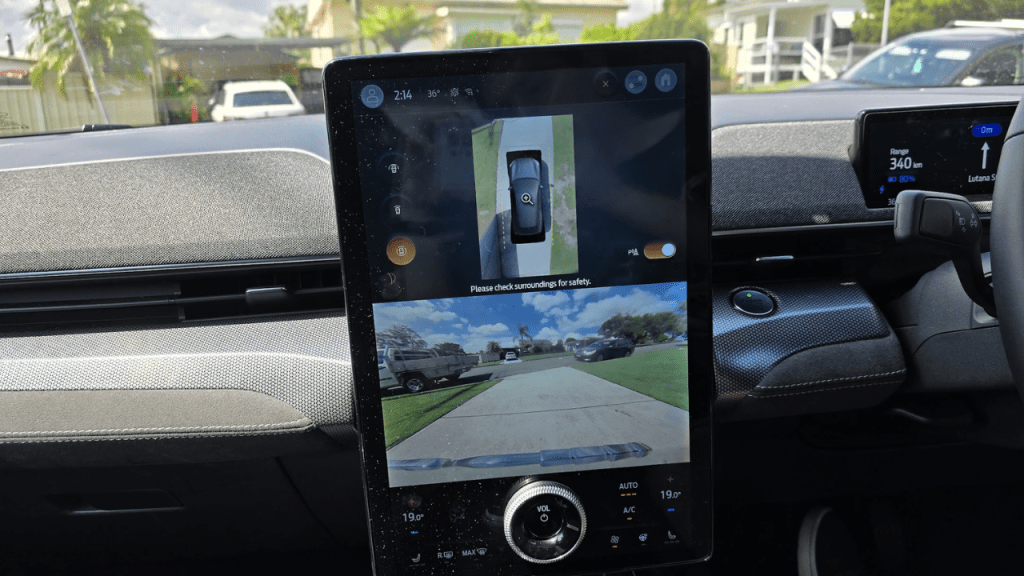
The driver assistance tech was also quite strong, including lane assistance and adaptive cruise control, though I was a bit annoyed by the fact that it automatically decelerates or accelerates to match the speed limit indicated by its own GPS system. Heading north on Sydney’s M2, and passing under a bridge, the car confused the speed limit for the freeway for the road above, and decided to pull me down from 60 to 40. Not great, but it can also be quite handy when handling changing speeds without your input. Regardless, this feature can be disabled (and, obviously, please be safe on the road!).
All models include a gorgeous panoramic roof, a 15.5-inch screen in the middle, a B&O sound system, wireless Apple CarPlay and Android Auto (a rarity among our reviews), LED headlights, and a 360 camera.
The Premium adds on multi-coloured ambient lighting, red brake callipers, and a gloss black exterior cladding, on top of the bigger battery.
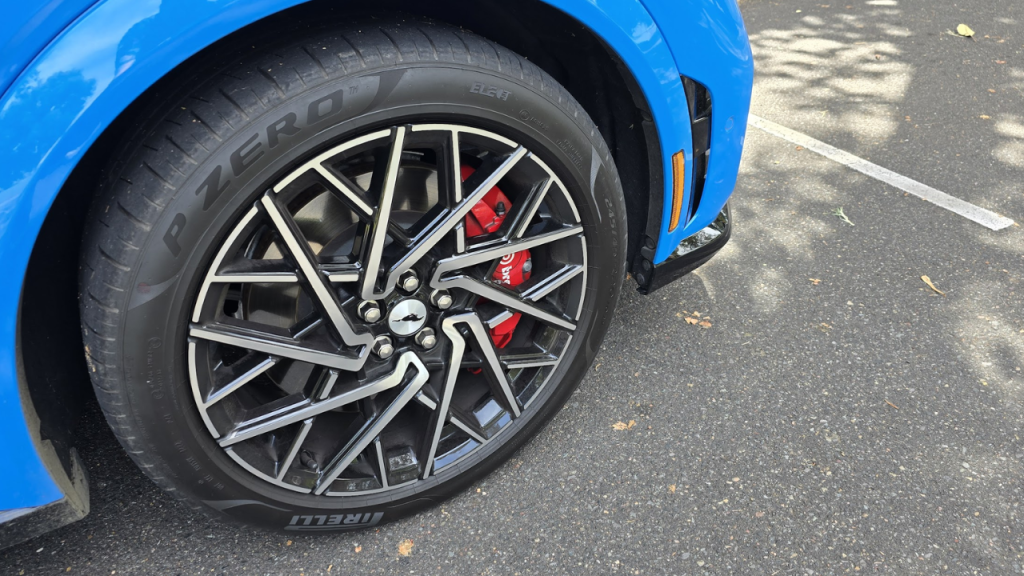
Then, the GT adds 20-inch rims (up from 19-inch), Brembo brakes, ‘MagneRide’ Adaptive Suspension, and Ford Performance sport front seats, along with the AWD, dual motor system that makes the car feel like a rocket.
Most people will likely go for the mid-range Premium option – it seems to make the most sense, especially with its range estimation, however, I reckon revheads would enjoy the acceleration from the GT. However, while it commits to the bit, it doesn’t feel too Mustang-y.
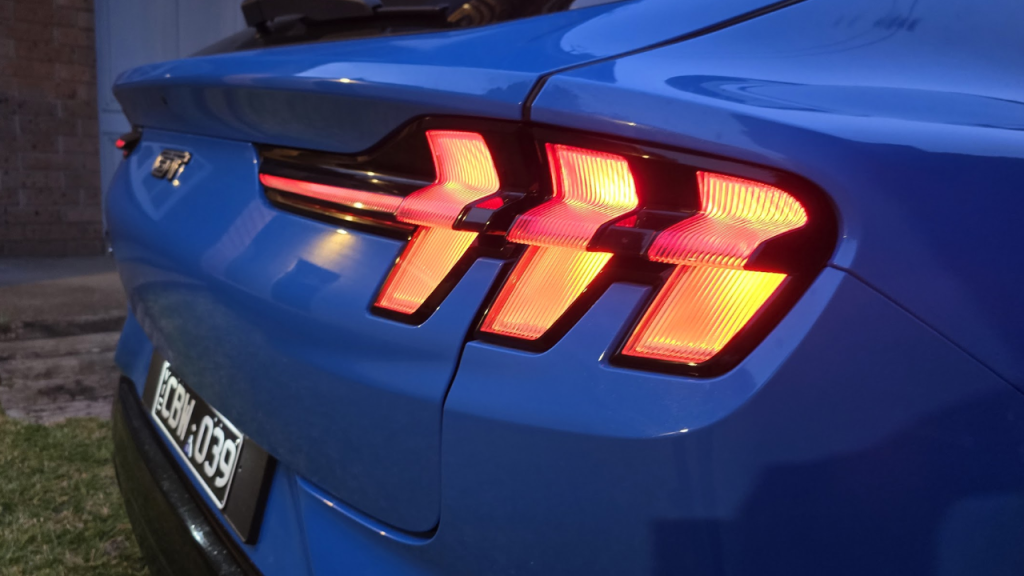
The verdict: should you buy the Ford Mustang Mach-E?
Of the EVs I’ve reviewed, the Ford Mustang Mach-E is one of the most impressive models. I’m sure there’s a refresh coming soon that will bring better battery range and ventilated seats, but for now, this car, which took years to arrive in Australia, has left me with a very strong impression, and if you were considering an EV above $70,000, then this car is well worth considering.
By RRP, The Ford Mustang Mach-E starts at $72,990 for the ‘Select’. The Mach-E ‘Premium’ costs $86,990, and the ‘GT’ costs $104,990.
Image: Zachariah Kelly/Gizmodo Australia
